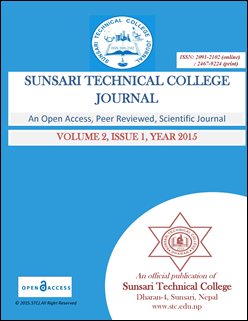Food Colorants and their Toxicology: An Overview
DOI:
https://doi.org/10.3126/stcj.v2i1.14803Keywords:
Food, Colorants, toxicology, toxicokinetics, toxicodynamicsAbstract
There are many kinds of colorants, which have been already banned or are used under strict supervision of food safety authorities. Use of artificial colorants over natural ones has increased in modern world. Besides, it has also concerned on importance of toxicological studies. Acceptable daily intake (ADI) of different colorants will define the optimum level of coloring substances on food items. Molecular size of coloring agents and their absorption ratio have significant role in toxico-kinetics. Bigger molecular size has lower absorption capacity and toxicity while vice versa for the smaller one. Higher absorption of smaller molecules can be lowered by binding with carrier molecules to make big enough to block through mucosal layer. Adverse health effects related to many colorants are itching, urticaria, anaphylaxis, hypersensitivity, intolerance reactions, mutagenicity, carcinogenicity, genotoxicity, cytostaticity and cytotoxicity. Color additives seem to be complex subject having direct relationship with consumer safety. Therefore, toxicology of attractive coloring agents might overlook the advantages of colorants. So, toxicologist and food scientist need to collaborate to define the use of different color additives and their safety in future in more scientific way.
Sunsari Technical College Journal 2015, 2(1):69-75




